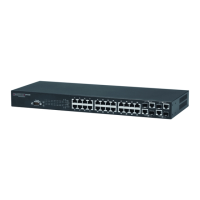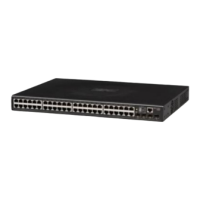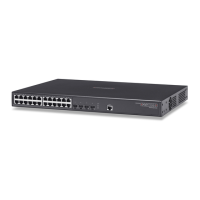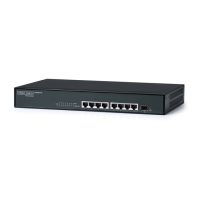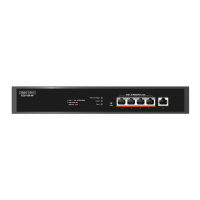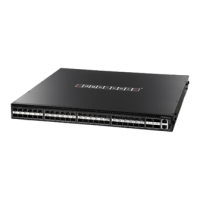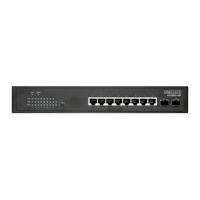C
HAPTER
16
| IP Configuration
Setting the Switch’s IP Address (IP Version 6)
– 433 –
4. Click Apply.
Figure 260: Configuring General Settings for an IPv6 Interface
CONFIGURING AN IPV6
ADDRESS
Use the IP > IPv6 Configuration (Add IPv6 Address) page to configure an
IPv6 interface for management access over the network.
CLI REFERENCES
◆ "IPv6 Interface" on page 1035
COMMAND USAGE
◆ All IPv6 addresses must be formatted according to RFC 2373 “IPv6
Addressing Architecture,” using 8 colon-separated 16-bit hexadecimal
values. One double colon may be used in the address to indicate the
appropriate number of zeros required to fill the undefined fields.
◆ The switch must always be configured with a link-local address.
Therefore any configuration process that enables IPv6 functionality, or
assigns a global unicast address to the switch, including address auto-
configuration or explicitly enabling IPv6 (see "Configuring IPv6
Interface Settings" on page 430), will also automatically generate a
link-local unicast address. The prefix length for a link-local address is
fixed at 64 bits, and the host portion of the default address is based on
the modified EUI-64 (Extended Universal Identifier) form of the
interface identifier (i.e., the physical MAC address). Alternatively, you
can manually configure the link-local address by entering the full
address with the network prefix FE80.
◆ To connect to a larger network with multiple subnets, you must
configure a global unicast address. There are several alternatives to
configuring this address type:
■
The global unicast address can be automatically configured by
taking the network prefix from router advertisements observed on
the local interface, and using the modified EUI-64 form of the
interface identifier to automatically create the host portion of the
address (see "Configuring IPv6 Interface Settings" on page 430).

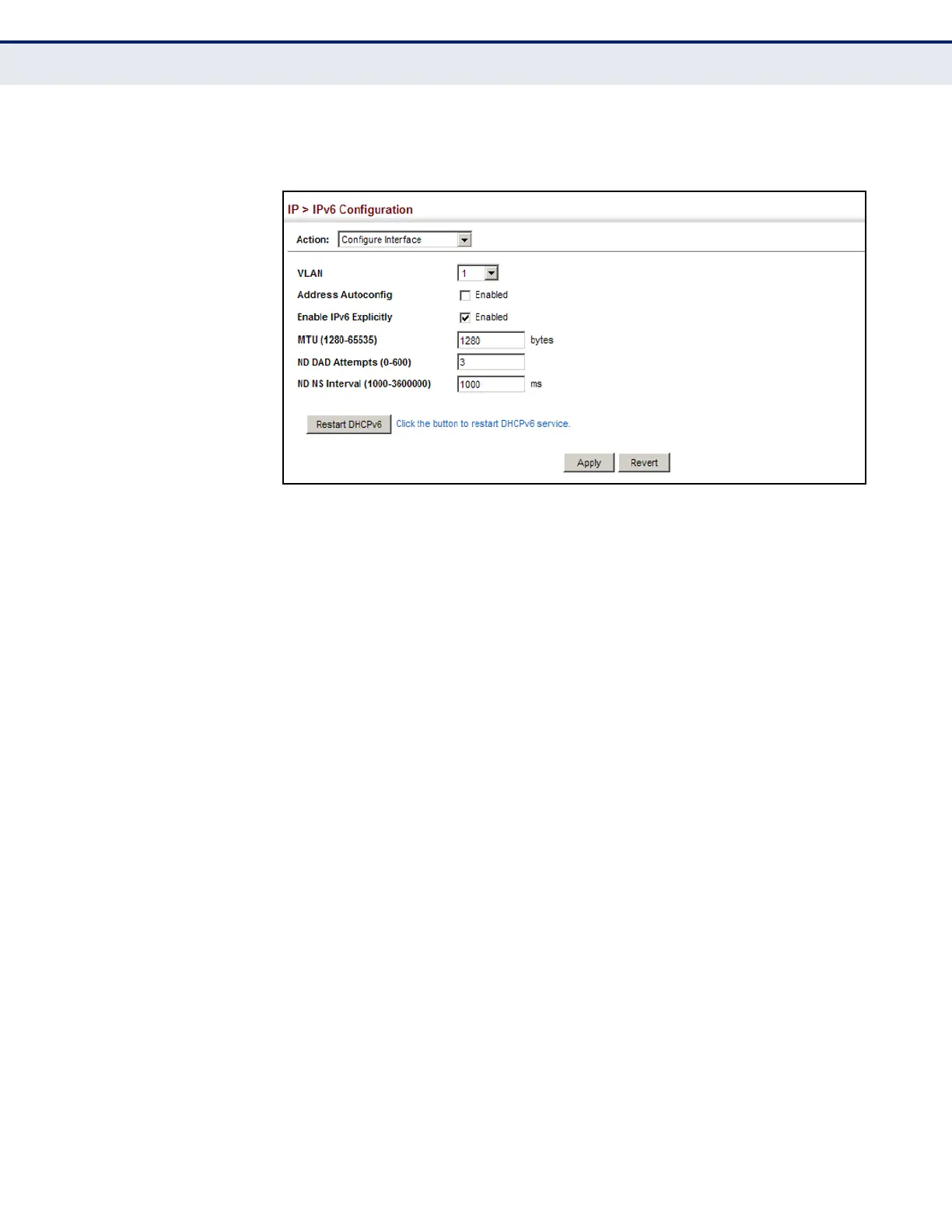